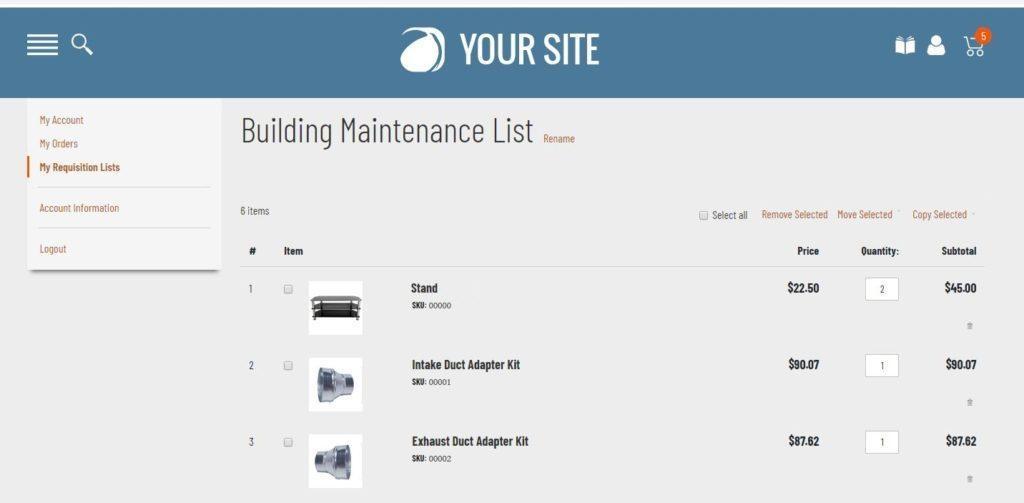Advanced requisition list functionality, standard with Magento 2 Commerce (M2C), helps merchants simplify the buying experience for repeat buyers. Robust functionality makes it easy for users to create, store, and manage lists, then easily order items as needed. It’s of particular value for B2B companies where buyers regularly reorder items – and those items may have precise or complex attributes.
Requisition lists differ from wishlists (standard with M2 Open Source and Commerce) in two important ways:
- Users can have multiple requisition lists, but only one wishlist
- Each product stays on the requisition list even after it’s purchased
Why are these distinctions important? Let’s explore…
Advantages of Having Multiple Requisition Lists
Buyers can make as many requisition lists as they want and define them as desired. This is especially helpful for B2B buyers who want to organize items based on product type, department, frequency of reorder, or other criteria. Users can prepare lists over time and modify as needed.
To add items to a requisition list, the user simply selects “Add to Requisition List” from a category page, product detail page, or previous order, then selects which list to add the item to from the dropdown that appears. It’s easy to remove an item, copy or move it to another list. When it’s time to buy, the user simply selects items individually or in bulk and clicks the “move to cart” button. Quantities may be designated on the requisition list or in the cart.

Benefits of Products Staying on Requisition Lists
When an item is ordered from a requisition list, the item stays on the list for future reference. This saves time and reduces the likelihood of errors, especially for items that have multiple attributes. The buyer can easily reorder an item exactly as it was previously defined. No need to redo research, rebuild orders, or search through past orders each time they reorder.
In addition, buyers availing themselves of Company Account functionality can share requisition lists with others in their organization. For example, a purchasing coordinator may need to get approval from other departments before placing an order. He/she can share each requisition list with specific designated reviewers.
Requisition List Functionality Inspires Customer Loyalty
M2C requisition lists have the precision and flexibility needed for B2B buyers to organize and place orders more efficiently and with fewer errors. When buyers are empowered to manage their account and can get the info they need to do their job easily and independently, they’re more likely to keep returning.
Get a FREE eCommerce Business Assessment – learn how you can manage orders, product data, customer information, and accounting processes in one seamless system.
October 22, 2019
All Articles